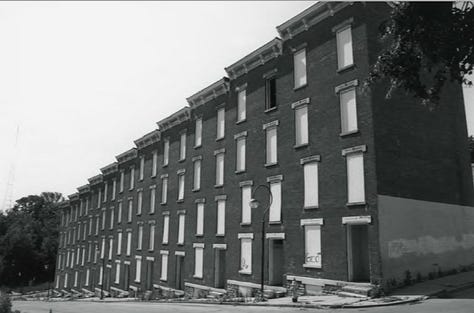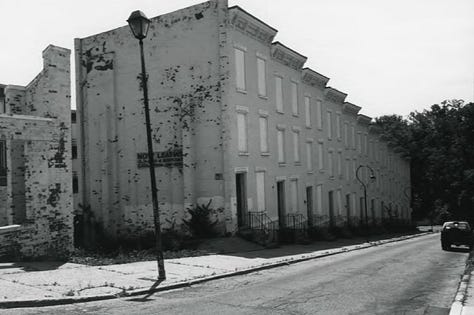Glencoe-Auburn Place: From Hallowed to the Hole
Cincinnati's first suburb, built in the late 19th century, all but disappeared in 2013.
Glencoe Place (the street) was originally called Mitchell Avenue, named for Jethro Mitchell.
Glencoe Place (the development) was built on land called Little Bethlehem, due to its proximity below Christ Hospital on Mt Auburn.
Nearby on Auburn Ave, Jethro's c. 1850 estate Sunnyside is still standing. It's now called Doane house after the man who purchased it from Jethro in 1879.
Jethro was from Massachusetts, but his family came from Glencoe, Scotland.
He worked closely with Truman B. Hardy, his father-in-law. He married Truman's daughter, who was 42 years younger than him.
Glencoe-Place Hotel & Houses were built in Sunnyside’s backyard.
According to legend, Jethro & Truman saw that Mt. Auburn was prospering and wanted to build a hotel.
Jethro had his land, but the pair couldn’t buy any land on Auburn Avenue.
The snooty existing landowners feared that yet another hotel would draw too much riff-raff.
So - allegedly - Jethro sold his estate and he & Truman planned to “flood the area with middle and low-class residents out of spite.”
Their c. 1884-1891 set of buildings had so many apartments in such close proximity that only “certain types” would want to live there.
Rather than 3-story row houses, these were single-story flats.
Despite that, a turn-of-the century ad made Glencoe sound pretty luxurious. It was, however, much less ornate than other Cincinnati row houses.
The Glencoe was the largest and best equipped apartment house in Ohio.
Handsome suit of parlors for public use.
Apartments equipped with first-class furniture at a small additional cost.
High-class cafe service
Interior telephone system in each flat.
Bell-boy service, electric light, steam heat.
Luxury 2-room flats with bath, $17-$19/month.
3-room flats with bath, $22-$6/month.
There was also a hotel, which shared walls with some of the row houses.
Jethro died in 1895. His 4 acres and Glencoe Place went to his wife, Helen.
Helen ran it as a nice place for years, but her death in 1926 was just what the building needed to achieve its spiteful origins.
By the '60s, Glencoe was such shit that its residents began Cincinnati's first rent strike. Where they lived was now called "The Hole."
The Glencoe Place Redevelopment Project took place around 1975. Between 200-250 apartments were enlarged, resulting in 99 units.
The renovation earned national acclaim and there was another honeymoon period. Then, disrepair in the 1990s.
The last renters were evicted in 2002.
Then came Pauline Van der Haer, president of Dorian Development. Glencoe had been boarded up when she bought it in 2004.
She had visions of creating 68 high-class condominia (TIL this is a word) with a rooftop pool & parking garage.
Pauline and architect Tom Hefley got the Glencoe (54 buildings) listed on the National Register of Historic Places in December 2003.
A spec unit was built using a pastel reminiscent of the houses' original colors.
The project faltered due to budget. They tried removing the pool and other amenities, but still couldn't get enough city funding to build.
Christ Hospital eventually wanted to expand their complex and build more parking.
Even though Pauline sued the city for $15.5 million and the hospital, she was not successful in retaining the funds or saving Glencoe-Auburn.
Glencoe was demolished in 2013. All that’s left are streets and street lights.
Crazy to think Doane House outlasted all of it.





























